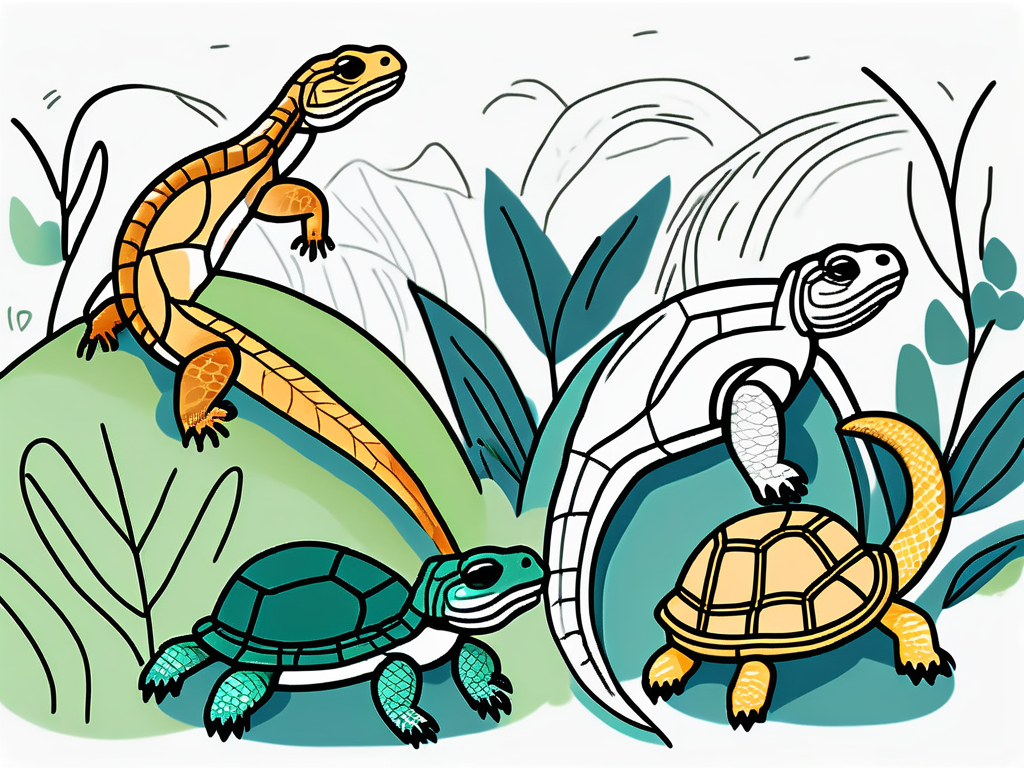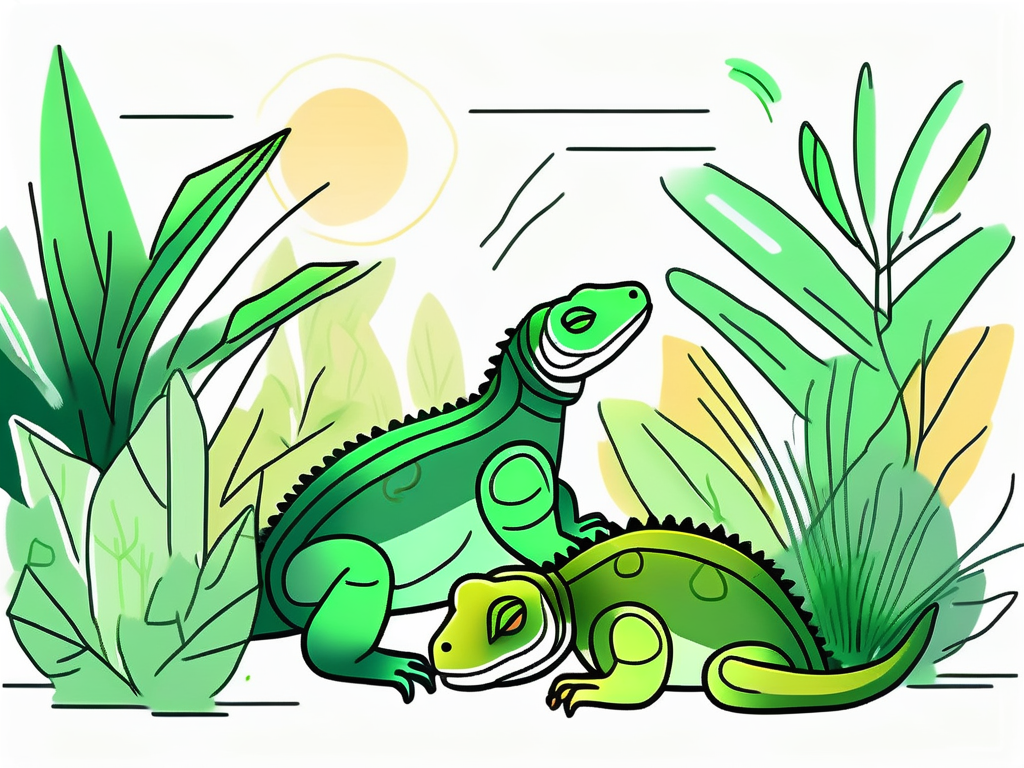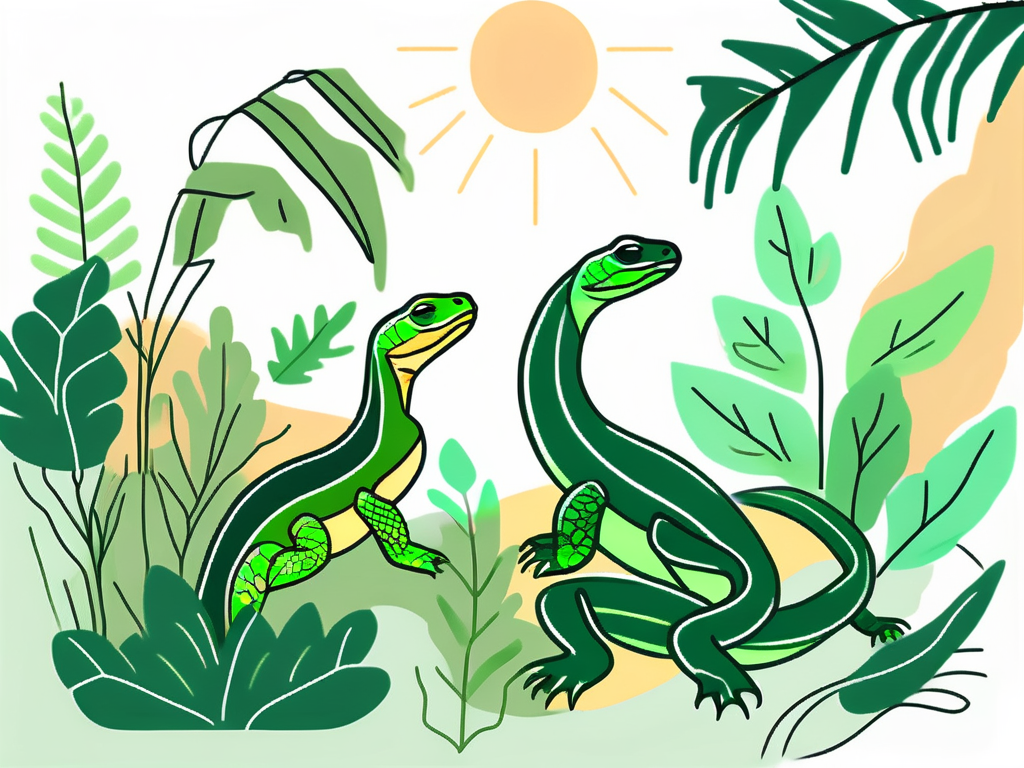Reptiles, with their unique cold-blooded physiology, have long been a subject of fascination and curiosity. Many reptile owners and enthusiasts have noticed a change in their pets’ behavior during the warmer months. In this article, we will explore the question: Do reptiles become more active in the summer?
Understanding Reptile Behavior
Before we dive into the impact of summer on reptile activity, it’s crucial to understand the basics of reptile behavior. Reptiles are ectothermic creatures, meaning their internal body temperature varies with the temperature of their environment. Unlike mammals, such as dogs or cats, reptiles cannot regulate their body temperature internally.

Instead, reptiles rely on external sources of heat, such as sunlight or artificial heating devices, to raise their body temperature. This dependence on ambient temperature is a key factor in understanding how reptiles adapt to seasonal changes, including the summer.
Reptiles have evolved fascinating mechanisms to cope with the challenges posed by temperature fluctuations. For instance, some reptiles, like the desert-dwelling Gila monster, have developed behavioral adaptations to avoid extreme heat. They spend the hottest parts of the day in underground burrows, where the temperature is relatively cooler and more stable. This behavior helps them conserve energy and avoid overheating.
The Impact of Temperature on Reptile Activity
Temperature plays a vital role in reptile activity levels. As the temperature increases, reptiles tend to become more active. This correlation is particularly pronounced in reptile species native to warmer climates, where they have evolved to thrive in scorching temperatures.
Warmer temperatures stimulate reptiles’ metabolic processes, leading to increased activity levels. Higher body temperatures increase the efficiency of digestion, enabling reptiles to metabolize food more efficiently and provide them with the energy necessary for heightened activity.
However, it’s important to note that extreme heat can also have adverse effects on reptile behavior. When temperatures reach extreme highs, some reptiles may seek shelter and reduce their activity to avoid overheating. This adaptive response helps them conserve water and prevent dehydration, which is crucial for their survival in arid environments.
Seasonal Changes in Reptile Behavior
While reptiles, in general, exhibit heightened activity in response to rising temperatures, their behavior during the summer can vary depending on several factors, including their species, habitat, and natural history.
For example, aquatic reptiles like turtles may take advantage of the warmer temperatures to bask in the sun and regulate their body temperature. Basking not only helps them warm up but also aids in the production of vitamin D, which is essential for their overall health and calcium metabolism.
On the other hand, some reptiles, such as snakes, may become less active during the summer months. This decrease in activity can be attributed to the scarcity of prey, as many small mammals and birds tend to seek shelter from the heat. Snakes may conserve their energy and reduce their movements until food sources become more abundant.
The Science Behind Reptiles and Summer
Let’s delve deeper into the intricate relationship between reptiles and summer by exploring two crucial aspects: the role of metabolism in reptile activity and how sunlight affects reptiles.

The Role of Metabolism in Reptile Activity
Metabolism plays a vital role in determining reptile activity levels. As ectotherms, reptiles rely on their external environment to regulate their body temperature. The summer months provide reptiles with ample opportunities to bask in the sun, facilitating higher metabolic rates and increased activity.
During the summer, reptiles are more likely to engage in hunting, foraging, and territorial behaviors. Their heightened metabolic activity enables them to explore their surroundings, search for mates, and establish their territories more vigorously than during other seasons.
Additionally, the increased metabolic rate during summer allows reptiles to digest food more efficiently. This efficient digestion is crucial for their overall health and energy levels, supporting their active lifestyle during the warmer months.
How Sunlight Affects Reptiles
Sunlight is essential for reptiles’ overall well-being, especially during the summer months. Exposure to sunlight triggers important physiological processes, such as the production of vitamin D3, which is vital for calcium metabolism and bone health in reptiles.
Furthermore, sunlight provides reptiles with the necessary energy to engage in active behaviors. Basking under the warm rays of the sun allows reptiles to absorb radiant heat, raising their body temperature and fueling their increased activity levels during the summer.
Moreover, sunlight influences the circadian rhythms of reptiles, helping to regulate their sleep-wake cycles and overall behavior patterns. The natural light-dark cycle provided by the sun plays a significant role in maintaining the biological rhythms of reptiles, ensuring they remain active during the day and restful at night.
Different Reptile Responses to Summer
Not all reptiles respond to summer in the same way. Various reptile species, with their distinct physiological adaptations and ecological niches, exhibit unique behaviors and activity levels during the warmer months.
Summer is a crucial time for reptiles to regulate their body temperatures effectively. Some reptile species, such as the iconic sun-loving bearded dragons, bask in the sunlight to absorb warmth and boost their metabolism. This increased activity helps them forage for food and engage in social interactions within their habitat.
Comparing Activity Levels in Various Reptile Species
Reptile species have evolved different strategies to cope with seasonal changes, including the summer. Some reptiles, like desert-dwelling lizards, thrive in high temperatures and become incredibly active during the summer heat.
Conversely, certain turtle species may alter their behavior during the summer to regulate their body temperature. They might be seen sunbathing on rocks or logs to absorb heat and then retreat to cooler, shaded areas to prevent overheating. This dynamic thermoregulation behavior helps them maintain their internal body temperature within a narrow range for optimal functioning.
On the other hand, reptiles from cooler habitats, like certain snake species, may retreat to shade or underground burrows to avoid excessive heat. These species may still exhibit activity but in a more subdued manner compared to their heat-loving counterparts.
Unique Summer Behaviors in Reptiles
Summer is the season of courtship and reproduction for many reptile species. Male reptiles often become more territorial and engage in elaborate displays to attract potential mates. Female reptiles, too, exhibit unique behavior patterns during the summer to ensure the survival and successful hatching of their offspring.
For some snake species, summer signifies the time for gravid females to seek out suitable nesting sites to deposit their eggs. These females may display increased aggression to protect their clutch and carefully regulate the nest temperature through behaviors like coiling around the eggs or adjusting their position in response to environmental cues.
The Effect of Increased Summer Activity on Reptiles
While increased activity during the summer may seem beneficial for reptiles, it’s important to consider both the advantages and potential risks associated with heightened activity levels.
Understanding the intricate balance between the benefits and risks of increased summer activity is crucial in ensuring the well-being of reptiles in their natural habitats.
Benefits of Summer Activity for Reptiles
Summer activity can provide reptiles with numerous benefits. Increased exposure to sunlight helps regulate their metabolism, enhances digestion, and supports overall physiological well-being. Elevated activity levels also stimulate muscle development and promote overall fitness in reptiles.
Furthermore, the heightened activity during the summer allows reptiles to engage in essential behaviors such as foraging, basking, and reproduction. These activities are vital for their survival and reproductive success, contributing to the overall health of reptile populations.
Potential Risks of Increased Summer Activity
Although heightened summer activity can be advantageous, it also carries potential risks for reptiles. Extended periods of activity can lead to greater energy expenditure, which may result in dehydration or exhaustion if reptiles do not have adequate access to water and appropriate resting areas.
Moreover, increased activity exposes reptiles to a higher risk of predation or accidents. Reptiles may be more vulnerable to attacks from predators while they are actively searching for food or mates during the summer. This heightened vulnerability underscores the importance of conservation efforts to protect reptile populations from potential threats.
How to Support Your Reptile During Summer
As a reptile owner, it’s essential to provide the right environment and care to support your pet’s well-being during the summer months. Reptiles are ectothermic creatures, meaning they rely on external heat sources to regulate their body temperature. This makes it crucial for you to create the perfect environment for them to thrive.

Providing the Right Environment for Your Reptile
Ensure your reptile’s enclosure offers a temperature gradient, allowing them to regulate their body temperature effectively. This means providing a warm basking spot where they can soak up the heat and a cooler area where they can retreat to if they get too warm. By mimicking their natural habitat, you are giving them the opportunity to behave as they would in the wild.
But it’s not just about temperature. Reptiles also need hiding areas to feel secure and reduce stress. These hiding spots can be in the form of rocks, logs, or even artificial caves. By providing these hiding areas, you are giving your reptile the option to retreat and feel safe whenever they need to.
Additionally, ensure your reptile’s enclosure is appropriately ventilated and that they have access to clean, fresh water at all times. Reptiles can become dehydrated quickly, especially during the hot summer months, so it’s crucial to monitor their water intake and regularly refill their water bowls.
Regularly monitor and adjust the temperature and humidity levels based on your reptile’s natural requirements. Different reptile species have different temperature and humidity preferences, so it’s important to do your research and provide the optimal conditions for your specific pet.
Monitoring and Managing Reptile Activity in Summer
While it’s natural for reptiles to exhibit increased activity during the summer, it’s crucial to monitor their behavior and make adjustments as needed. If you notice signs of stress or excessive fatigue, consider providing additional shaded areas within their enclosure. This can be achieved by strategically placing plants or providing artificial shelters that create a cooler microclimate.
Be mindful of potential overheating or dehydration by regularly checking and replenishing water sources. Reptiles may not always show obvious signs of distress, so it’s important to be proactive in ensuring their well-being. If you notice any changes in their behavior or appearance, don’t hesitate to consult with a reptile veterinarian. They can provide valuable guidance and help you address any health concerns.
Remember, reptiles do become more active in the summer due to the impact of temperature on their metabolic processes. However, the degree of activity can vary among species and individuals. By understanding the unique needs of your reptile and providing appropriate care, you can support their well-being during the summer months.
So, as you enjoy the warm summer days, don’t forget to give your scaly friend the love and attention they need. With the right environment, monitoring, and care, you can ensure your reptile stays happy and healthy all summer long.
